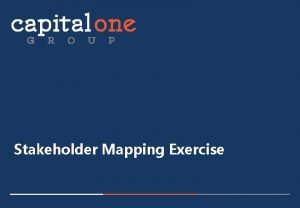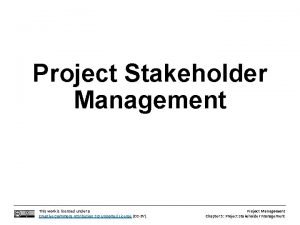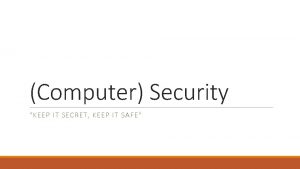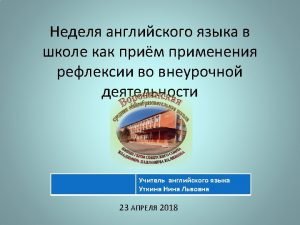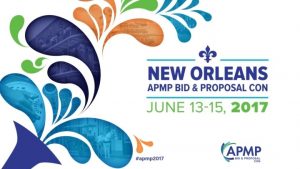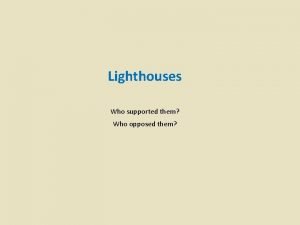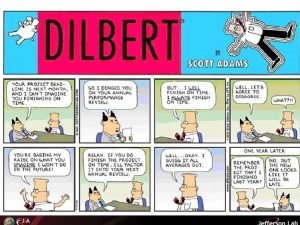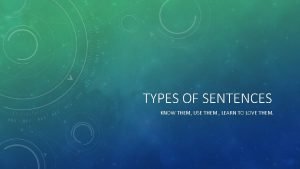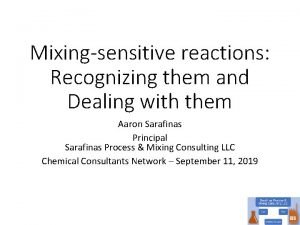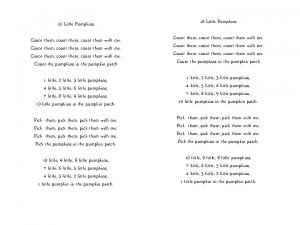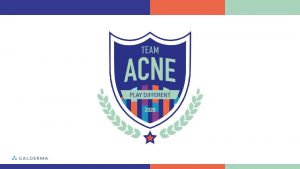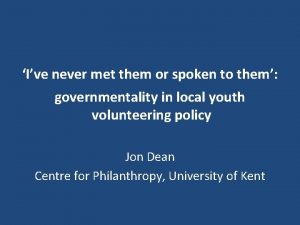How We Keep Them A Model for Student
























- Slides: 24

How We Keep Them: A Model for Student Retention Dawn M. Goodolf, Ph. D, RN Assistant Professor RN to BSN and Accelerated BSN Program Director Moravian College

Objectives Discuss the challenges of student attrition in accelerated postbaccalaureate nursing programs. Define the characteristics of accelerated postbaccalareate nursing students. Explore a model for retention of adult students in accelerated postbaccalaureate nursing programs. Discuss lessons learned and future recommendations.

Background The Institute of Medicine’s (IOM) Future of Nursing Report (2010) called for an increase in the number of baccalaureate-prepared nurses from 50% to 80% by the year 2020. Reported 3. 6% increase in entry-level Bachelor of Science in Nursing (BSN) programs in 2016. Fifty-five percent of the nurses in the current workforce are prepared at a baccalaureate level (AACN, 2017).

Background Bureau of Labor Statistics (2018) projects the employment of nurses to grow 15% from 2016 -2026. Many college graduates unable to find jobs in their respective fields. Accelerated postbaccalaureate nursing programs were developed to build on previous earned degree. Currently over 270 Accelerated postbaccalaureate programs in the United States.

Student Profile No Nonsense Older More diverse socioeconomic backgrounds Greater number of men Higher academic expectations Higher GPA Competitive

“We are a group of 33 men and women. Our ages span three and a half decades. Collectively we have 15 children. We come from 8 different countries, including England, Thailand, Morocco, Ghana and Liberia, Sierra Leone, Nigeria, and all over the continental US. We speak French, Spanish, Arabic, Twi, Yoruba, Russian and probably others. We observe countless different religions. During our time here at Moravian, we embraced these differences and came together in pursuit of a common goal. We built connections with each other that will last a lifetime. ” Catherine Herron Class of December 2017

Accelerated Postbaccalaureate Nursing Students High probability of Passing NCLEX-RN on the first attempt. Essential to understand student profile to effectively recruit students. Highly recommended to interview applicants.

Challenges Program attrition rates remain high Rapid curriculum pace and intensity Personal issues Financial hardships and cost of program Employment during program Faculty members also experience challenges Student demands Program demands Nursing is not what they expected

Challenges for the Adult Learner in Nursing School Bridging the gap Managing stress The great balancing act Social support Unanticipated expectations Finding relevance Developing a professional identity


Moravian College Accelerated Postbaccalaureate Nursing Program Inaugural Class began in August 2014. Intentional small cohort of 32 students. 16 month program. Early decision commitment and regular decision dates. Classes only begin annually (August of each year). Recommend not to work.

Admission Requirements Earned a previous baccalaureate degree from an accredited college or university with a cumulative GPA of at least a 2. 75. Completed prerequisite courses within 5 years of application to the program. Must have received a C or above in prerequisite courses. Admission interview required.

Curriculum Session I and II – 7 weeks 3 days of theory and 16 hours of clinical Session III- Session VI- 10 weeks 2 days of theory and 24 hours of clinical Spanish 100 and 105 part of the curriculum. 1000 hours of clinical time (same as traditional undergraduate program).

Moravian College Accelerated Postbaccalaureate Nursing Program August 2014 (50 applicants) 32 enrolled, 31 students graduated August 2015 (69 applicants) 32 enrolled, 32 graduated August 2016 (100 applicants) 34 students enrolled, 33 students graduated August 2017 ( 83 applicants) 31 students enrolled, currently midpoint remain 31 August 2018 – (170 applicants) Anticipating 40 students

Lessons Learned Need to have a dedicated program director/advisor. Holistic admission process is vital. Faculty teaching in these programs must have a foundational knowledge of the needs of the adult learner. Faculty must embrace being challenged. Innovative pedagogy to engage the adult learner. Promote self care.

Lessons Learned Accelerated programs cannot be identical to the traditional undergraduate programs- one size does not fit all. Students need to feel connected. Student mentor program Faculty relationships are essential. Students will remind you of the high cost of tuition they are paying and debt they are consuming for this degree- demand return on their investment. Need boundaries.

Comments made from graduates of the program

Lesson Learned – Cohort 1 “It would have contributed to my classroom experience to only allow complaints outside of classroom time. "The complainers" detracted from my overall ability to learn effectively and efficiently” “Please educate nursing faculty members on appropriate methods of teaching adult students. ” The incivility between students is ridiculous especially at this age level. This program was purely taken from the undergrad program and shoved into 16 months. This program needs to be reworked in order to fit the needs of accelerated students who already have a degree in something else

Lesson Learned – Cohort 2 “Just always be open for changing the curriculum to meet the specific needs of the post-bac student. There was some good progress made this year in revising policy, assignments, etc for the nursing classes because some concepts were more suited for undergrad students and not 2 nd degree students. ” I feel that the positive lines of communication and the mutual respect that was demonstrated to our cohort will be key to maintaining success in future cohorts. Overall, every professor, clinical instructor, etc. that we have worked with has been incredibly passionate about nursing. The nursing staff member's love for learning, the drive to do more and be the best is so apparent!

Lesson Learned- Cohort 3 After researching the topics of stress and coping our final session, it became clear to many of us that we had learned about others, including our patients, being stressed and how to “fix” them, but not ourselves. If there were a section for the students specifically, maybe a holistic coping lesson, that would benefit the students. They would have the knowledge on how to cope with stress coming out of school and diving right into a new job. Encourage communication between prospective students and current/past students. This helped me tremendously before I entered the program to manage my family's needs/childcare.


References American Association of Colleges of Nursing (AACN) (2018). Accelerated nursing programs. Accessed online on 3/9/2018 at: http: //www. aacnnursing. org/Students/Accelerated-Nursing-Programs Bureau of Labor Statistics. (2018). Occupational Outlook Manual. Retreived from: https: //www. bls. gov/ooh/healthcare/registerednurses. htm Doggrell, S. A. & Schaffer, S. (2016). Attrition and success rates of accelerated students in nursing courses: A systematic review. BMC Nursing, 15(24), n. p. doi: 10. 1186/s 12912 -016 -0145 -7 Goodolf, D. (2013). Growing a professional identity: A grounded theory of the educational experience of baccalaureate nursing students (Doctoral Dissertation). Retrieved from: https: //pqdtopen. proquest. com/results. html? school=Widener%20 Univ ersity

References Hegge, M. & Larson, V. (2008). Stressors and coping strategies of students in accelerated baccalaureate nursing programs. Nurse Educator, 33(1), 26 -30. doi: 10. 1097/01. NNE. 0000299492. 92624. 95 Institute of Medicine [IOM]. (2010). The future of nursing: Leading change, advancing health. Retrieved from: http: //www. iom. edu/Reports/2010/The-Future-of-Nursing-Leading. Change-Advancing- Penprase, B. , & Koczara, S. (2009). Understanding the experience of accelerated seonddegree nursing students and graduates: A review of literature. Journal of Continuing Education in Nursing, 40(2), 74 -78. Wolf, L. , Stidham, A. W. , & Ross, R. (2015). Predictors of stress and coping strategies of US accelerated vs. generic baccalaureate nursing students: An embedded mixed methods study. Nurse Education Today, 35(1), 201 -205. doi: 10. 1016/j. nedt. 2014. 07. 005 Zhan, L. , & Finch, L. (2012). Accelerated education in nursing: Challenges, strategies, and future directions. New York, NY: Springer Publishing. ISBN: 978 -0 -8261 -0764 -0

 Stakeholders mapping
Stakeholders mapping Power-interest grid
Power-interest grid Keep it secret keep it safe
Keep it secret keep it safe If you can t beat them join them
If you can t beat them join them Kiss method keep improve start stop
Kiss method keep improve start stop Iso 22301 utbildning
Iso 22301 utbildning Typiska drag för en novell
Typiska drag för en novell Tack för att ni lyssnade bild
Tack för att ni lyssnade bild Vad står k.r.å.k.a.n för
Vad står k.r.å.k.a.n för Varför kallas perioden 1918-1939 för mellankrigstiden?
Varför kallas perioden 1918-1939 för mellankrigstiden? En lathund för arbete med kontinuitetshantering
En lathund för arbete med kontinuitetshantering Personalliggare bygg undantag
Personalliggare bygg undantag Tidböcker
Tidböcker A gastrica
A gastrica Vad är densitet
Vad är densitet Datorkunskap för nybörjare
Datorkunskap för nybörjare Stig kerman
Stig kerman Att skriva en debattartikel
Att skriva en debattartikel Delegerande ledarskap
Delegerande ledarskap Nyckelkompetenser för livslångt lärande
Nyckelkompetenser för livslångt lärande Påbyggnader för flakfordon
Påbyggnader för flakfordon Kraft per area
Kraft per area Publik sektor
Publik sektor Kyssande vind analys
Kyssande vind analys Presentera för publik crossboss
Presentera för publik crossboss
